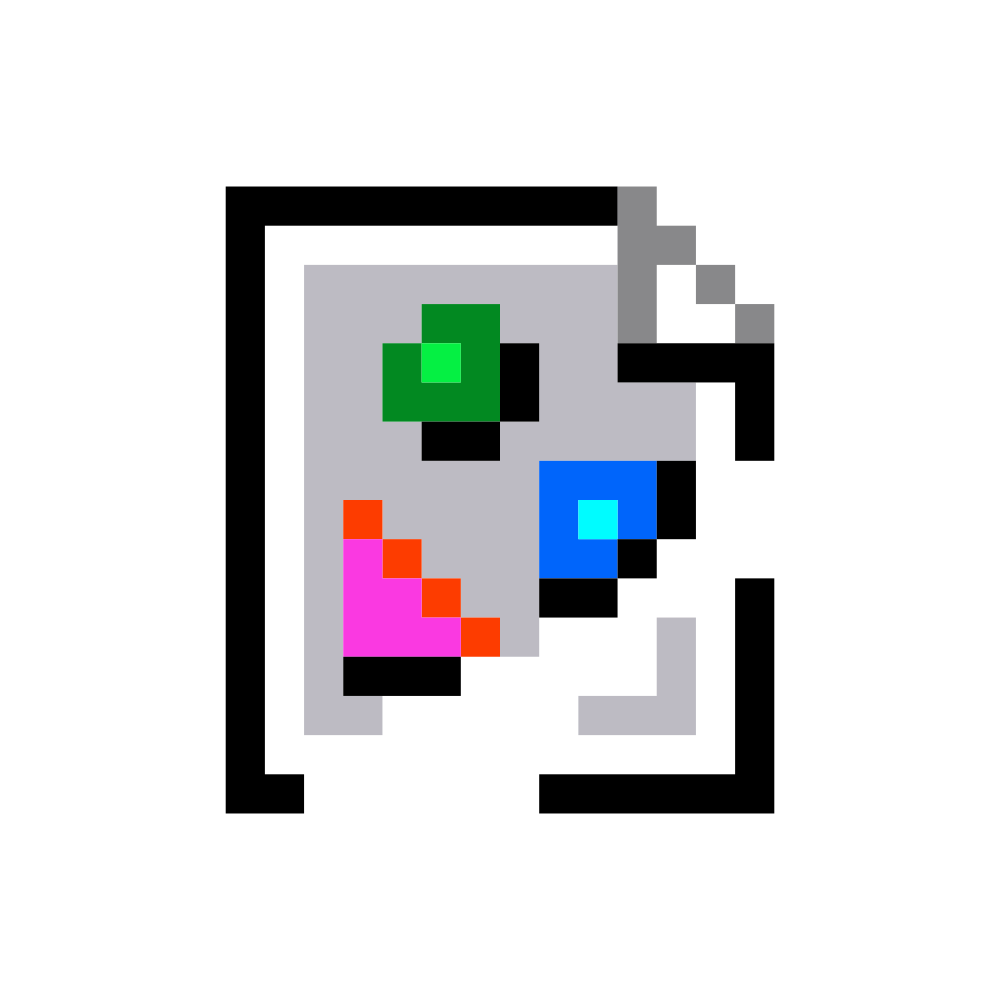Which Linux command or utility is simple, powerful, and surprisingly unknown to many people or used less often?
This could be a command or a piece of software or an application.
For example I’m surprised to find that many people are unaware of Caddy, a very simple web server that can make setting up a reverse proxy incredibly easy.
Another example is fzf. Many people overlook this, a fast command-line fuzzy finder. It’s versatile for searching files, directories, or even shell history with minimal effort.
Inshellisense is teaching me a lot. :) It’s an autocompleter.
https://github.com/microsoft/inshellisense
Also, Atuin for history.
pipeviewer or
pvI’ve switched from using
ddto usingpvto write disk images to removable media.Great call!
pvis deceptively powerful. Being able to see progress and rate limit a pipe is incredibly useful.
A few that I use every day:
- Fish shell
- Starship.rs
- Broot (a brilliant filesystem navigator)
- Helix editor (My favorite editor / IDE, truly the successor to vim IMO)
- Topgrade (updates everything)
Helix is great thanks
Could you explain them in more depth? I opened them and don’t know
Helix is a terminal based text editor. It’s much like vim / neovim, but unlike those editors it’s good to go right out of the box, no configuration or plugins needed to make it work well.
Topgrade is one I haven’t used, but it looks like its intended purpose is to let you upgrade your apps with one command, even if you use multiple different package managers (I.e. if you were on Ubuntu, you could use it to upgrade your apt packages, at the same time as your snap packages, as well as flatpak, nix, and homebrew if you’ve added those.)
Thank you for explaining. I would never have understood topgrade without your example :)
Fish is a replacement of bash that’s a bit more user friendly (has some cool auto completion features out of the box and more sane behaviour like handling of spaces when expanding variables). I personally started to use nutshell recently but unlike fish it’s very different from bash.
Starship is a “prompt” for various shells (that bit of text in terminal before you enter the command that shows current user and directory in bash). I haven’t used it but AFAIK it has many features like showing current time, integration with git, etc.
Yep, here’s my Starship prompt, for example:

So, I have it configured to show:
- the exit code of the last command (if it’s non-zero),
- the duration of the last command (if it’s longer than 2 seconds),
- the time (when the last command ended),
- the current directory,
- the current Git branch, and it also shows some Git status information, for example the
means I have something stashed, - and finally the technology in use in a repository/directory, so in this case that repo uses Rust and the compiler version is 1.83.
Thanks for adding this. What does stashed mean
Oh, when you’re coding something in a Git repo and you realize that you need to make a different change before you continue coding (e.g. switch to a branch, pull newest changes, or just create a separate smaller commit for part of your change), then you can run
git stash pushto put away your current changes, then make your other change, and then rungit stash popto bring your ongoing changes back. I recommend readinggit stash --help, if you want to use it.Sometimes, though, you might end up just taking it into a different direction altogether or simply forget that you had something stashed. That’s when that indicator comes in handy. Because while you can have multiple things stashed, I do find it’s best not to keep them around for too long. If you do want to keep them for longer, then you can always create a branch and commit it as WIP onto there, so that you can push it onto a remote repo.
This is sick!! Would you mind sharing your config?
Nope, I’m glad to share.
I personalized it from the “Gruvbox Rainbow” preset from here: https://starship.rs/presets/
So, you might prefer that, if you’re not, well, me.You will need to set up a NerdFont, like the Starship installation guide says.
Here’s my configuration:
Spoiler
"$schema" = 'https://starship.rs/config-schema.json' format = """ [$status](bg:color_red fg:color_fg0)\ [](fg:color_red bg:color_orange)\ [$cmd_duration](bg:color_orange fg:color_fg0)\ [](fg:color_orange bg:color_yellow)\ [$time](bg:color_yellow fg:color_fg0)\ [](fg:color_yellow)\ $line_break\ [$directory](bg:color_aqua fg:color_fg0)\ [](fg:color_aqua bg:color_blue)\ [$git_branch\ $git_status](bg:color_blue fg:color_fg0)\ [](fg:color_blue bg:color_bg3)\ [$c\ $rust\ $golang\ $nodejs\ $php\ $java\ $kotlin\ $haskell\ $python\ $docker_context](bg:color_bg3 fg:color_fg0)\ [](fg:color_bg3)\ $line_break\ $line_break""" palette = 'gruvbox_dark' [palettes.gruvbox_dark] color_fg0 = '#ffffff' color_bg1 = '#3c3836' color_bg3 = '#665c54' color_blue = '#458588' color_aqua = '#689d6a' color_green = '#98971a' color_orange = '#d65d0e' color_purple = '#b16286' color_red = '#cc241d' color_yellow = '#d79921' [status] disabled = false symbol = "" format = ' $symbol $status ' [username] format = ' $user ' [directory] format = " $path " truncation_length = 3 truncation_symbol = "…/" [directory.substitutions] "Documents" = " " "Downloads" = " " "Music" = " " "Pictures" = " " "Projects" = " " [git_branch] symbol = "" format = ' $symbol $branch ' [git_status] style = "bg:color_aqua" format = '$all_status$ahead_behind ' [nodejs] symbol = "" format = ' $symbol $version ' [c] symbol = " " format = ' $symbol $version ' [rust] symbol = "" format = ' $symbol $version ' [golang] symbol = "" format = ' $symbol $version ' [php] symbol = "" format = ' $symbol $version ' [java] symbol = " " format = ' $symbol $version ' [kotlin] symbol = "" format = ' $symbol $version ' [haskell] symbol = "" format = ' $symbol $version ' [python] symbol = "" format = ' $symbol $version ' [cmd_duration] format = ' $duration ' [time] disabled = false time_format = "%R" format = ' $time ' [line_break] disabled = false
Do you have experience with either ranger, lf, or yazi? I’m wondering how broot compares. Big fan of file ranger, and this looks very similar.
Just commenting to give more love to helix. It’s my favorite “small quick edits” editor.
I heard about helix from you and I’ve used it for a year and a half or so now, it’s by far the best editor I’ve used so far and I can definitely vouch for it
Nice!
Once Helix gets plugin support and someone makes a Clojure REPL plugin as good as Conjure I am never touching
vimagain!It does have clojure lsp support, but you’ll probably have to use a command line for most repls.
Yeah the clojure lsp support is top notch, but there being no support for “jacking in” to a repl is the big thing keeping me from using helix full time. There’s a way of doing it if you use kitty, but it’s pretty janky.
I’ve actually been testing with fish recently coming from zsh, though I might wait until 4.0 fully releases before I make a more conclusive decision to move or not.
With that said, I remember looking through omf themes and stumbled onto Starship that branched off one of the themes and really liked the concept.
One thing that holds people back sometimes is that bash scripts that set environment variables don’t work by default. https://github.com/edc/bass is an easy solution
Idk a lot of commands but I think wget for downloading webpages and rsync for syncing devices are pretty awesome
I love
httpiefor hitting urls when i want to see the headers or body without downloading to a file eg testing an apiThe first time I used wget I felt so awesome. I was grabbing some extra music files I think it was for Ur-Quan Masters.
I like https://github.com/aristocratos/btop personally. It’s way prettier than the normal top command which you use to watch processes to find the one that’s hogging all of the CPU or whatever. And it’s not so much that it’s underrated so much as it’s not very well known or distributed by default.
I abused debfoster for years… it kept my machines running very, very clean.
jq?
https://github.com/johnkerl/miller is like awk, sed, cut, join, and sort for name-indexed data such as CSV, TSV, and tabular JSON
I use it occasionally but every time I need to do something a tiny bit more complex than “extract field from an object” I have to spend half an hour studying its manual, at which point it’s faster to just write a Python script doing exactly what I need it to do.
Check out https://www.nushell.sh/ I use it for exactly that, i.e. complex extract and convert files
I actually installed it recently out of curiosity, but I’m hesitant about learning its advanced features like that. At least jq is a standalone tool that’s more ubiquitous than nushell, so you can rely on it even in environments that you don’t fully control (e.g. CI like GitHub Actions). And if you use it in some public code/scripts then other people will be more familiar with it too.
yq can do both JSON and YAML :)
Funny how this was one of the first tools I learnt once I “seriously” started my linux journey, lol
CTRL-L to clear your terminal output. Or type clear
Also
Ctrl+Dto exit any shell andCtrl+Rfor reverse searching your history!
Bat, a cat alternative.
Lsd, an ls alternative.
Procs, a ps alternative.
Renane, because it’s great.
what is the difference between
ezaandlsd? I switched toezaa while back and i havent looked at any other ls replacement.Love LSD. I always install it first with btop and zoxide
I think a lot of people don’t realise that yt-dlp works for many sites, not just YouTube
I used it recently for watching a video from tiktok without having to use their god awful web UI and it was amazing
Since everyone keeps mentioning yt-dlp I gotta ask: what’s wrong with the original youtube-dl? I keep using it, it works, it’s still being updated.
yt-dlp has sponsorblock features, youtube-dl does not.
There are minor feature differences there’s also a convenience factor: youtube-dl people for some reason stopped doing releases, so you can’t get a fresh version from pypi (only installing from github or their site). Yt-dlp is on pypi, including nightly builds.
It also supports ripping playlists. Fantastic to archive a set locally…
Also works on Twitch with the added benefit of NOT playing ads (you still get breaks, just with a placeholder screen instead of the commercial).
mpv has yt-dlp support built in, so it can just play the streams directly.
Wait how?
I just run
mpv $URLThis is the only way to watch twitch
With their huge, clunky UI and my 1080p screen, yeah it is.
mpv --ytdl URL. Read starting from --ytdl option in the mpv man page, you can even give specific yt-dlp options through --ytdl-raw-options.
mlocateDo you have to wear the fedora to run this command?
No sorry, I should have elaborated. The package name is
mlocatebut the command islocate. Occasionally runupdatedbas it populates an sqlite db with every file on your system that you can then list out usinglocatefollowed by the filename you want to locate.
I immediately had flashbacks of diagnosing bad I/O performance on CentOS 5 servers. That was the week when I learned what updatedb is and why it was always running in the background (there was a lot of files)
I love locate! I have a cronjob that updates the db every night, then I can just find a file without having to think about where it is
ddis probably well known, but one of the simplest and most powerful ways to accidentally delete all data on your hard drive.dd if=/dev/random of=/dev/sdaYou can destroy it all the same with
cporcat.ddrescue (or gddrescue) is a great version if you have a sick drive. It’ll try to copy the good areas first then go back to hammer on the sick areas.
Not perfect as it doesn’t know about the file system so it tries to copy the entire surface, but generally a good tool.
Use
lessfor checking contents of files. Many people usecatall the time, but I don’t like it, because if you do that often, your terminal window quickly gets flooded with stuff, and then you have to scroll up and down if you wanna see a previous output. Withless, your file opens in a different “frame”, which you can close when you’re done.cat <your file> | more
Useless use of cat award!
Try bat…
I’d like to interject for a moment. There is also a tool called bat that is just cat with extra features. It prints out and works just like cat, but when the contents get too big, it works like less. The is syntax highlighting and works with git.
It’s replaced my need for cat and less.
glances! Way better than
topand does a bazillion cool things!I loved glances until I switched to
btopwith Hot Purple Traffic Light theme, and I doubt I’ll switch again. Check it out!
I’m a big fan of
screenbecause it will let me run long-running processes without having to stay connected via SSH, and will log all the output.I do a lot of work on customers’ servers and having a full record of everything that happened is incredibly valuable for CYA purposes.
Woah screen is seeing active development again? There was like a decade where it stagnated. So much so that different distros were packaging different custom feature patches (IIRC only Ubuntu had a vertical split patch by default?) Looking at it now, the new screen maintainers had to skip a version to not conflict with forks that had become popular.
When tmux stabilized I jumped ship immediately and never looked back.
tmux with control mode in iterm is god mode for me on all my machines. Absolutely love it.
I’d recommend
tmuxfor that particular use. Screen has a lot of extras that are interesting but don’t really follow the GNU mentality of “do one thing and do it well.”Tmux / Screen is like the emacs/vim of the modern day Linux I think.
Screen is more than capable, but for those who have moved to Tmux, they will absolutely advocate for it.
When tmux was first released I was already so used to screen that I never really considered switching. What would some convincing arguments be for me to make the effort to switch now?
Tmux was purpose built for terminal multiplexing. You can assign session names for organizing and manipulating multiple instances. Send keys to and read output from detached sessions. It’s easy to script.
Tmux was purpose built for terminal multiplexing.
Was screen not purpose built for terminal multiplexing?
This was a few years ago so maybe it has improved, but I found that screen would crash and lose my session history and layout too often. That was bad enough, but when it happened it had some bullshit error message about a dungeon roof falling in. I don’t mind some comedy in code or even the interface, but don’t make light of the user losing their stuff. I tried tmux and it is much more stable than screen was.
The thing that got me to switch was being able to maintain my pane layout between connections. The various window and pane management niceties (naming, swapping, listing and the like) got me to stay. Now you can keep your screen, but you’d have to pry tmux from my cold, dead, tty.
There is also zellij, which can do the same but also has modern functionality specific for development workspaces!
(Although
screenortmuxwill still probably be more widely available on remote machines etc)nohupis similarIt’s not as useful, sadly. Nohup disconnects standard input, output, and error. With screen or tmux, you can reattach them later.
I’ve had nohup fail to keep things running after my session ended quite frequently. It’s like it just goes to the next step in the process then gives up.
It’s likely that you’re using a systemd based system and the admin hasn’t enabled
lingerfor your user.The servers are very locked down, so I’m sure that’s part of our compliance requirements. I haven’t looked into fixing it because I just wrote a script to hit Enter every 10 minutes to keep it alive.
Ha! Faking key presses, truly an elegant weapon for a more civilized age. If it works, it works.
I know everyone likes tmux but screen is phenomenal. I have a .screenrc I deploy everywhere with a statusbar at the bottom, a set number of pre-defined tabs, and logging to a directory (which is cleaned up after 30 days) so I can go back and figure out what I did. Great tool.























